Mixing concrete for DIY use is not difficult but for critical applications such as building it is essential that the concrete is mixed correctly, so the correct quantities of ingredients including water must be mixed correctly. In some cases you might be able to use something instead of concrete, for example when fixing posts in the ground you can now use post fix, which does not require mixing, you just pour a bag of it into the hole and then wet it. You can also get pre mixed concretes that you empty into a hole and then apply water using a watering can, these concretes are great for patch repairing existing damaged concrete. For most DIY use a normal mix of concrete would be 1 unit of cement, 2 units of sand and 3 units of gravel by volume (not weight)
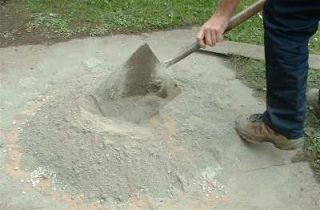
Mixing concrete by hand
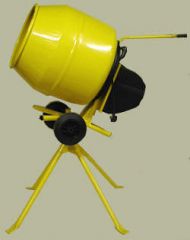
Mixing concrete using a cement mixer
Concrete can be mixed by hand for small quantities but for larger quantities it is much easier to get the professionals in. You can often but quantities of 1 cubic metre and above from concrete firms that will mix the concrete and drop it off at your desired location, there are also some firms that mix the concrete on site and barrow the concrete to your desired location, this is especially useful if you need the concrete in an area that is not easily accessible by a large concrete mixing wagon.

Here is a concrete wagon and a concrete pump, the concrete is being mixed in the concrete wagon and emptied into the other wagon which is pumping the concrete up to build pillars for a property in Cyprus.
Concrete for structural applications will be tested before it is poured, this is done by performing a slump test on the wet concrete using what looks like a large upside down funnel. The funnel is filled slowly and the contents are tamped down using a stick, the funnel is then lifted off and the slump of the concrete is measured. If the slump test is not satisfactory the concrete will not be used and the concrete wagon will be turned away.
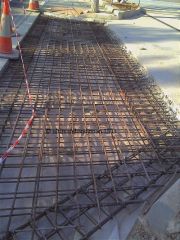
For structural applications such as buildings and roads it is often necessary to reinforce the concrete with steel reinforcing bars, which are often referred to as rebar.
When mixing concrete for non critical applications such as a garage base or footings for a garden wall you can easily mix the concrete yourself. Concrete can be mixed in different ratios depending on the use. For example a common mix for a garage base would be one part cement, two parts sand and three parts gravel. Different sized gravel can be used depending on the application. The ingredients for the concrete should always be measured accurately, in most cases this can be achieved by using a bucket to measure the exact quantities. A spade should never be used for measuring as some ingredients tend to pile higher on the spade so you will not get the correct quantities using this method. When mixing concrete by hand ensure that you mix the ingredients together thoroughly before adding the water as this ensures a consistent mix.

Shuttering is the name given to the formwork that gives concrete it's desired shape. Shuttering is often made from plywood or as in this picture can be made from steel. Here the steel rebar has been constructed, then steel shuttering has been built around the rebar. Once the concrete is poured and has set the shuttering will be removed leaving steel reinforced concrete pillars. .
When concreting in fence posts in the ground it is often much easier and faster to used a dedicated post mix which is bought in bags and simply poured into the post holes dry and then wet using a watering can. An example can be seen here Fixing decking posts
Patterned concrete
A popular choice for many driveways and paths is patterned concrete, below are two examples of patterned concrete. Before deciding on patterned concrete you should carefully consider the benefits and disadvantages of using patterned concrete.
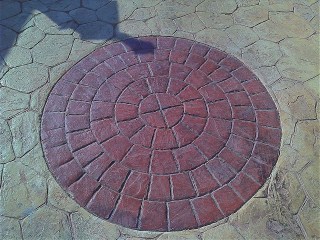
This pattern imprinted concrete looks well but can require a lot of maintenance
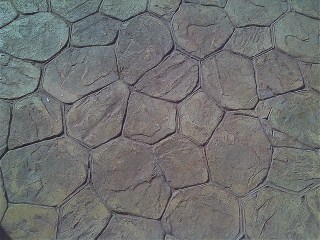
Remember that regular road grit/salt can severely damage pattern imprinted concrete



